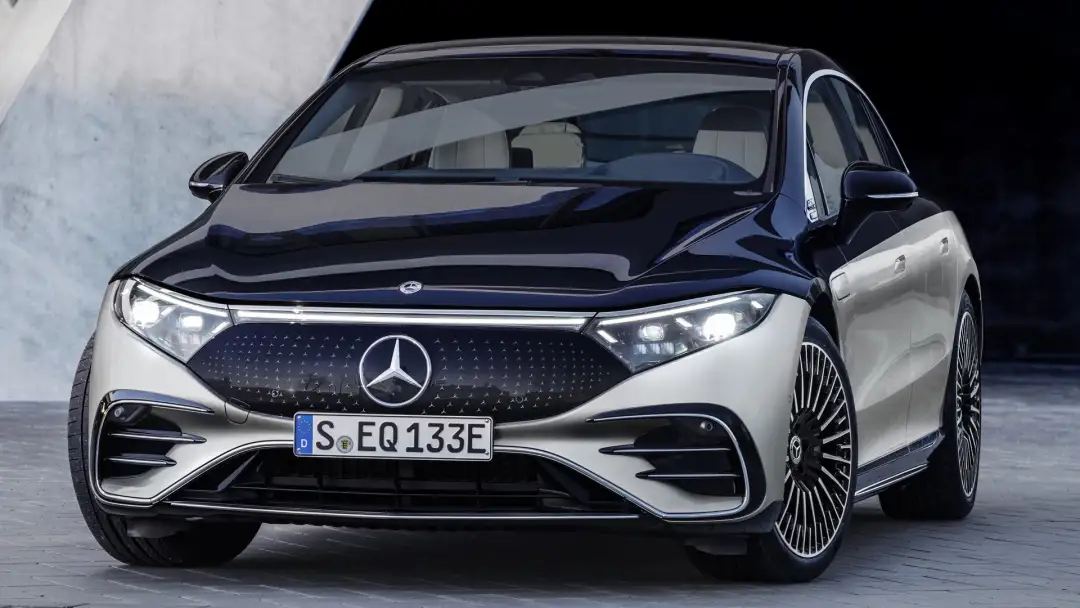Author: Wang Xuan
On the early morning of April 16th, the flagship product EQS in Mercedes-Benz’s electrification strategy unveiled its mysterious veil. We finally saw its true appearance at the Shanghai International Auto Show on the 19th of this month. Currently, the high-end electric vehicle race only has the new Tesla Model S and the more affordable NIO ET7. Although the Porsche Taycan is also in this price range, its audience is quite different from that of EQS, Model S, and ET7. Because EQS has fewer competitors, there will be a lot of imagination space for product features.
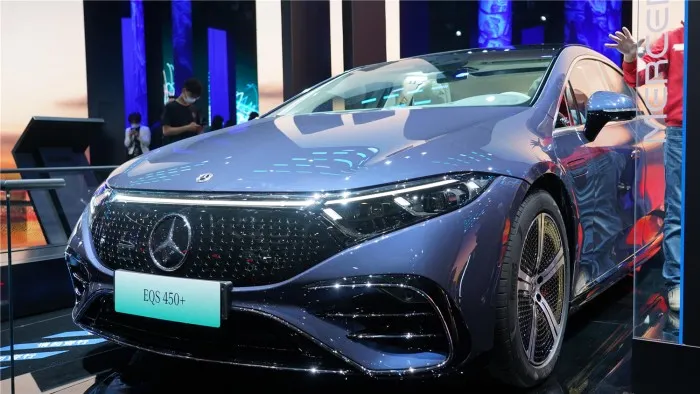
But Mercedes-Benz urgently needs to solve a problem: how to define luxury in the era of intelligence. If there is no answer, Mercedes-Benz, burdened with the luxury brand, will be lost in the tide of intelligence.
EQS: I am luxurious, avant-garde, well-equipped, but I am old school
First, let’s take a look at the basic data of the new EQS. Mercedes-Benz EQS is built on the brand-new electrification platform EVA, with a length of 5216 mm and a wheelbase of 3210 mm, which is comparable in size to the new generation of Mercedes-Benz S-Class. In terms of the battery, the EQS has a pack capacity of 107.8 kW/h, and the WLTP test under working conditions can reach a range of 770 km. At the same time, multiple power versions are provided for users to choose from, with the maximum power output reaching 385 kW.
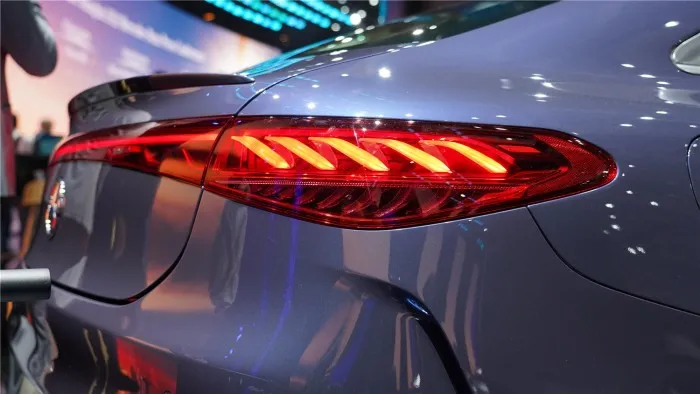
In terms of endurance, the EQS is not inferior to Tesla’s Model S. Judging from the current charging environment and efficiency of electric vehicles in China, as long as the range is no less than 500 kilometers, it can meet users’ daily travel needs. In terms of power, the EQS is positioned as an executive sedan, so the acceleration time of 100 kilometers per hour is not the core of its product. However, the maximum power output of 385 kW is already sufficient for EQS’s targeted users. The drag coefficient as low as 0.2 Cd can also provide drivers and passengers with a better driving experience.
Of course, the most eye-catching feature of the EQS is its timeless design. The styling of cars will definitely evolve with the advancement of autonomous driving technology. As long as the time that users participate in driving decreases, more time and energy will be freed up to carry out other activities in the car, which requires more space. The way to free up space is by electrification. Therefore, electrification plus automation will surely be the trend of future automobile development.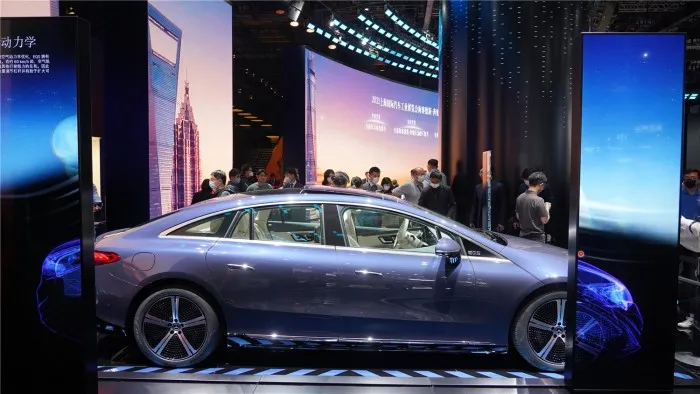
The new generation of Tesla Model S did not make significant changes in appearance styling, because at this moment, the autonomous driving technology cannot support the transformation of vehicle styling. Therefore, it remains unchanged. On the other hand, the Mercedes-Benz EQS reflects a contemporary style. We can see that the difference between EQS and traditional sedans lies in their overall design. Mercedes-Benz designers have integrated the trend of front cabin, driver’s compartment, and tail compartment on one line, making the styling look distinct from traditional cars but not yet touching the future. It is a middle product before cars become “mobility boxes”. The styling language is biased towards the future but has not yet reached it.
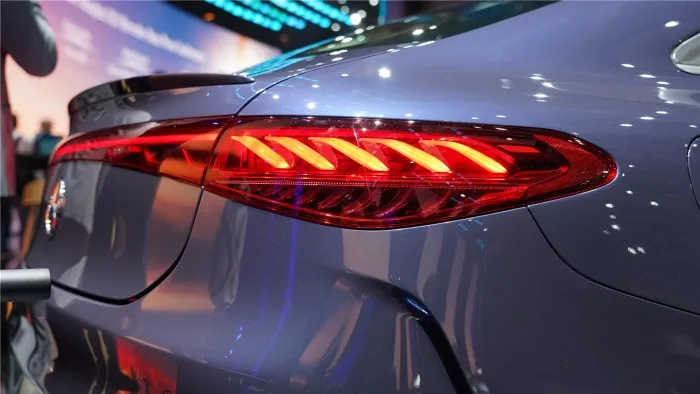
Although the EQS video, which is less than 20 minutes long, conveyed a lot of emotional information, there was not much technical information. The most eye-catching feature is Mercedes-Benz’s first installation of the MBUX Hyperscreen on the EQS, which is supported by powerful computing power containing an 8-core CPU, 24 GB of memory, and a memory bandwidth of 46.4 GB per second. Meanwhile, it provides “Zero Level” interaction logic.
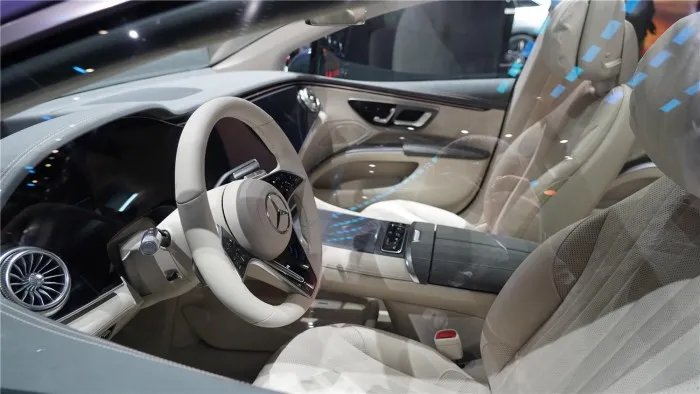
Although this screen has powerful hardware support, we still cannot see too many breakthroughs in upper-level functions for the moment. Instead, there is more human care. Both the central display screen and the front passenger display screen use OLED technology, and independently illuminated pixel points ensure that the screen can always present high-contrast color images, providing a clearer and more comfortable visual experience regardless of the angle or lighting conditions. The glass touch screen uses alumina silicate material, covered with two special coatings, which are scratch-resistant and reduce glare while being easier to clean. There are 12 sensors under the touch screen, and users will receive corresponding tactile feedback when touching the screen.
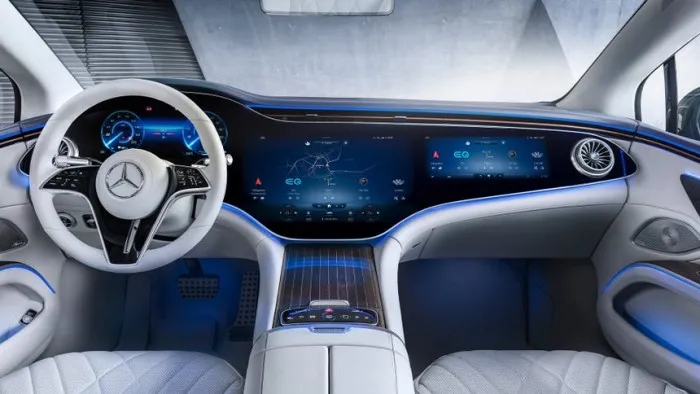 Mercedes-Benz is very clear about the age group of its audience, so the “level 0” interaction mode is designed to provide a simple and clear experience for older users. The central screen interface of the new generation MBUX uses a map as the background and floating windows as an auxiliary interaction method. The functional cards below the map will change in real-time, and Mercedes-Benz will proactively provide users with the necessary functions at appropriate times through AI, and constantly optimize based on environmental changes and user behavior.
Mercedes-Benz is very clear about the age group of its audience, so the “level 0” interaction mode is designed to provide a simple and clear experience for older users. The central screen interface of the new generation MBUX uses a map as the background and floating windows as an auxiliary interaction method. The functional cards below the map will change in real-time, and Mercedes-Benz will proactively provide users with the necessary functions at appropriate times through AI, and constantly optimize based on environmental changes and user behavior.
Because the size of the middle screen is large enough, the overall interactive interface looks very good. However, the drawback of “level 0” is also obvious. When the user clicks on a function, it does not directly enter the function page as we commonly see in interaction logic, but pops up a small dialog box. This design is actually not conducive to drivers operating in the driving process, and requires more energy to accurately select target items.
Expanding upper-level functions is a very imaginative task, but on the MBUX Hyperscreen, we did not see this imagination. The “direct delivery” and awkward user experience are like sending MMS on the iPhone 12.
“Luxury” lost in “Smart”
After watching the EQS release video of Mercedes-Benz, I have been thinking, in the era of smart electric vehicles, whether the dimension of judging luxury will also change? In the past, the standards for judging luxury cars were size, driving feel, riding experience, and interior materials. But with the rise of China’s new car-making strength and traditional independent brands, the technical difficulties of traditional cars are constantly being overcome.
Just like the AR-HUD on the Mercedes-Benz S-Class, although it was a leading technology in the industry when it was first released, it soon appeared at a Great Wall Motors’ press conference. Similarly, the flashy function of closing the car door with gestures on the EQS may also appear on other Chinese-brand models soon.
In terms of comfort, Chinese pioneers in the automotive industry have the ability to pile materials on the chassis, and products from NIO and Voyah can be equipped with air suspension. In terms of performance, the just-released Xpeng P5 brings a 30,000 yuan-level electric car into the 3-second acceleration club. Even though EQS can achieve L3-level assisted driving through lidar, cameras, and ultrasonic radar, it is still a follower in the market. After all, Xpeng’s map-based navigation assistance has already landed in China, and local brands better understand China’s road scenes in the field of assisted driving. Our brand is interpreting the sense of luxury of traditional luxury brands with more grounded prices, and “intelligence” is the foundation of China’s current automotive market.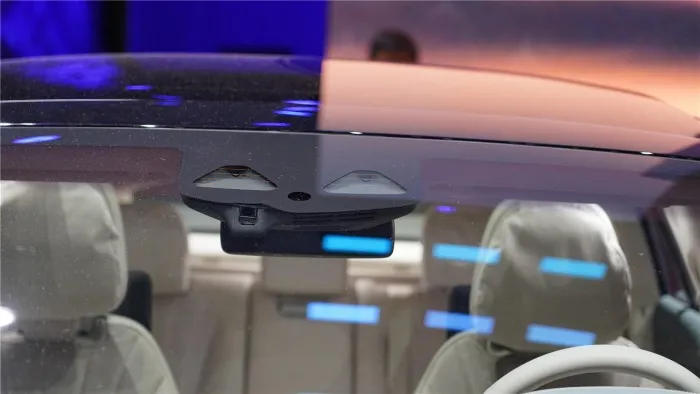
It is a very difficult task to define a premium car model with intelligent hardware, even Tesla has not figured it out. The intelligent ecosystem on Model 3 is already comprehensive enough, which makes it difficult for the new Model S to find room for improvement. The biggest difference between Model S and Model 3 is that Model S is equipped with a processor that can perform up to 100 trillion floating-point operations per second. However, such powerful hardware has no other functional expansion except for supporting car owners to play “The Witcher 3” in the car.
For users, what they get by spending more than 400,000 yuan to buy the rear-wheel drive long-range version of the Model S compared to Model 3 is just a larger car, and this transaction is actually not cost-effective. On the other hand, NIO is focusing on defining a new high-end brand around user experience, using intelligent functions and user services.
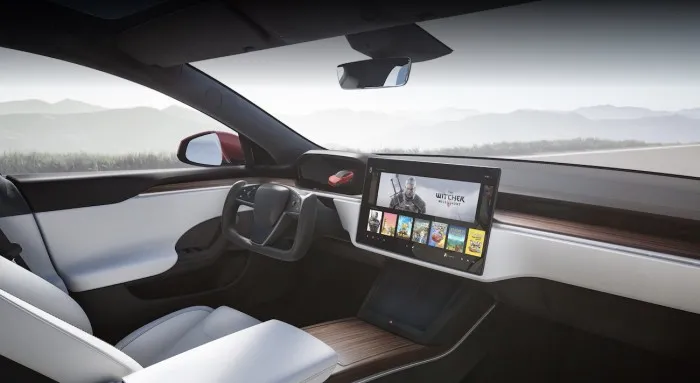
Therefore, in the era of intelligence, the level of intelligent hardware is not related to the level of the car. In the future automotive market, in addition to those luxury car brands that are piled up with crazy materials, car products that are acceptable to the general public may be on the same level, just like the current smartphone market.
Consumers today tend to evaluate whether a car is luxurious or high-end. In the future, people’s evaluation of whether a car is high-end or not may be based on the degree of intelligence.
There are three dimensions to evaluate intelligence: the first is autonomous driving capability, because autonomous driving will be the key variable that subverts the entire automotive industry. In the future, users will not buy a product because it has autonomous driving, but will not buy this product because its autonomous driving ability is weak. The second point is the ability of the underlying electronic and electrical architecture, which also determines the ability of software-defined cars. The third point is user experience, including the experience of upper-layer functions and the experience of car companies providing services to customers.
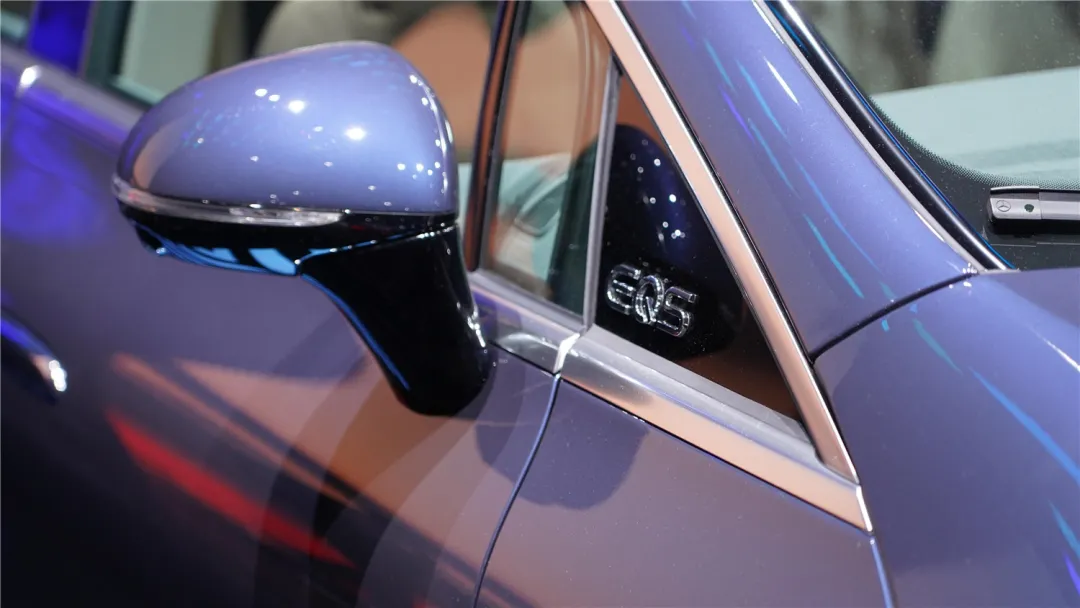
If Mercedes-Benz wants to consolidate its brand position in the era of intelligent electric vehicles, it must start with the above three dimensions of product reform.
Rising Chinese “intelligent vehicle companies” are trying to break the definition of traditional luxury cars and define “new high-end cars” with more rational intelligent configurations and high-quality user experiences. As for “traditional high-end” and “new high-end”, users will need time to verify. EQS is just a “boy” in the maze.
However, for Mercedes-Benz, they still have strong brand appeal, so the market and customers will still give them time to prove themselves.
This article is a translation by ChatGPT of a Chinese report from 42HOW. If you have any questions about it, please email bd@42how.com.
